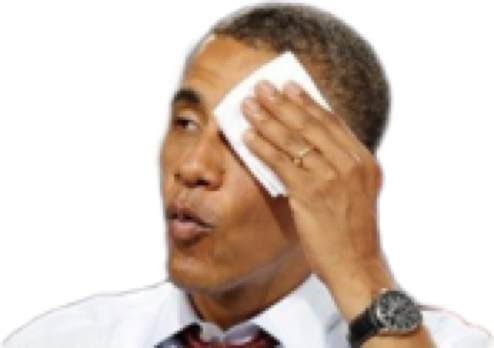The same year Inoue was brought on to Otomo’s Akira follow up Memories handling the Magnetic Rose sequence directed by Koji Morimoto with writing and storyboarding by Satoshi Kon

This is one of the seldom instances where Inoue was on character design duty, and animation direction, with this short feeling like his magnum opus. The cream of the crop of his sakuga supervision. According to one source Inoue allegedly corrected and redrew half of the short to preserve his style, and let the animation flow better. As for his actual designs they take a lot after Okiura’s on Hashire Melos! though the seriousness of Okiura’s other characters from Ghost in the Shell are felt too.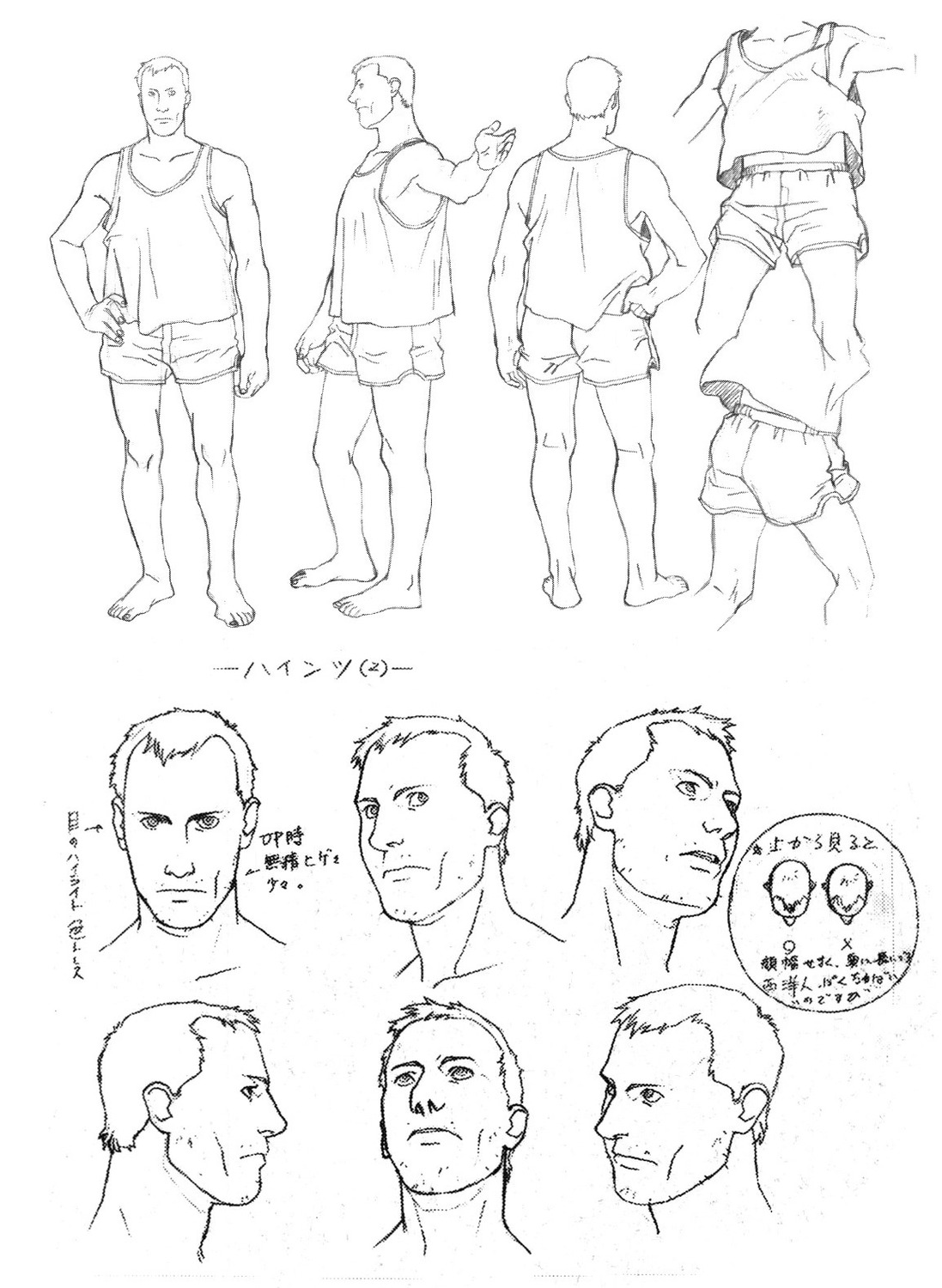
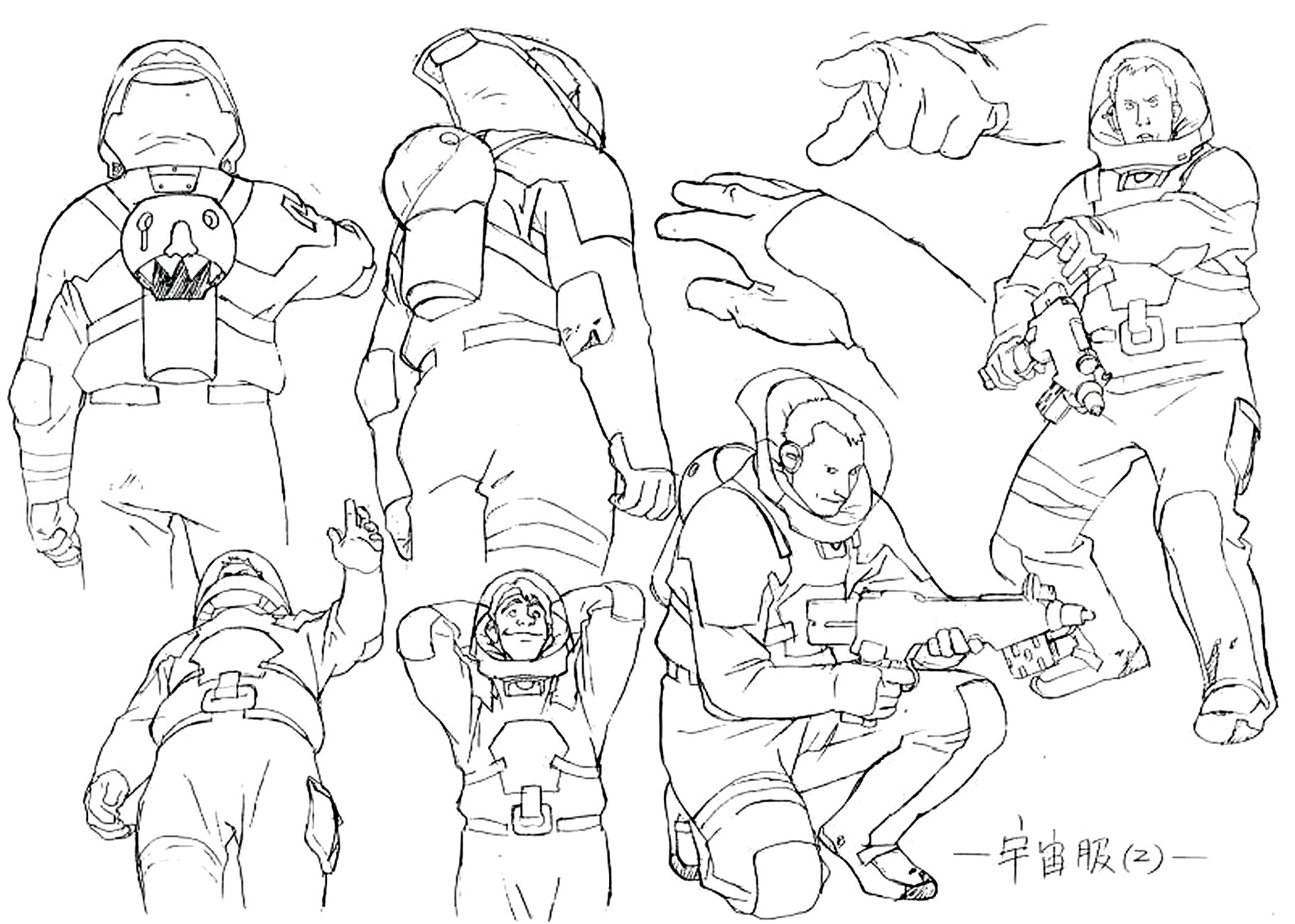
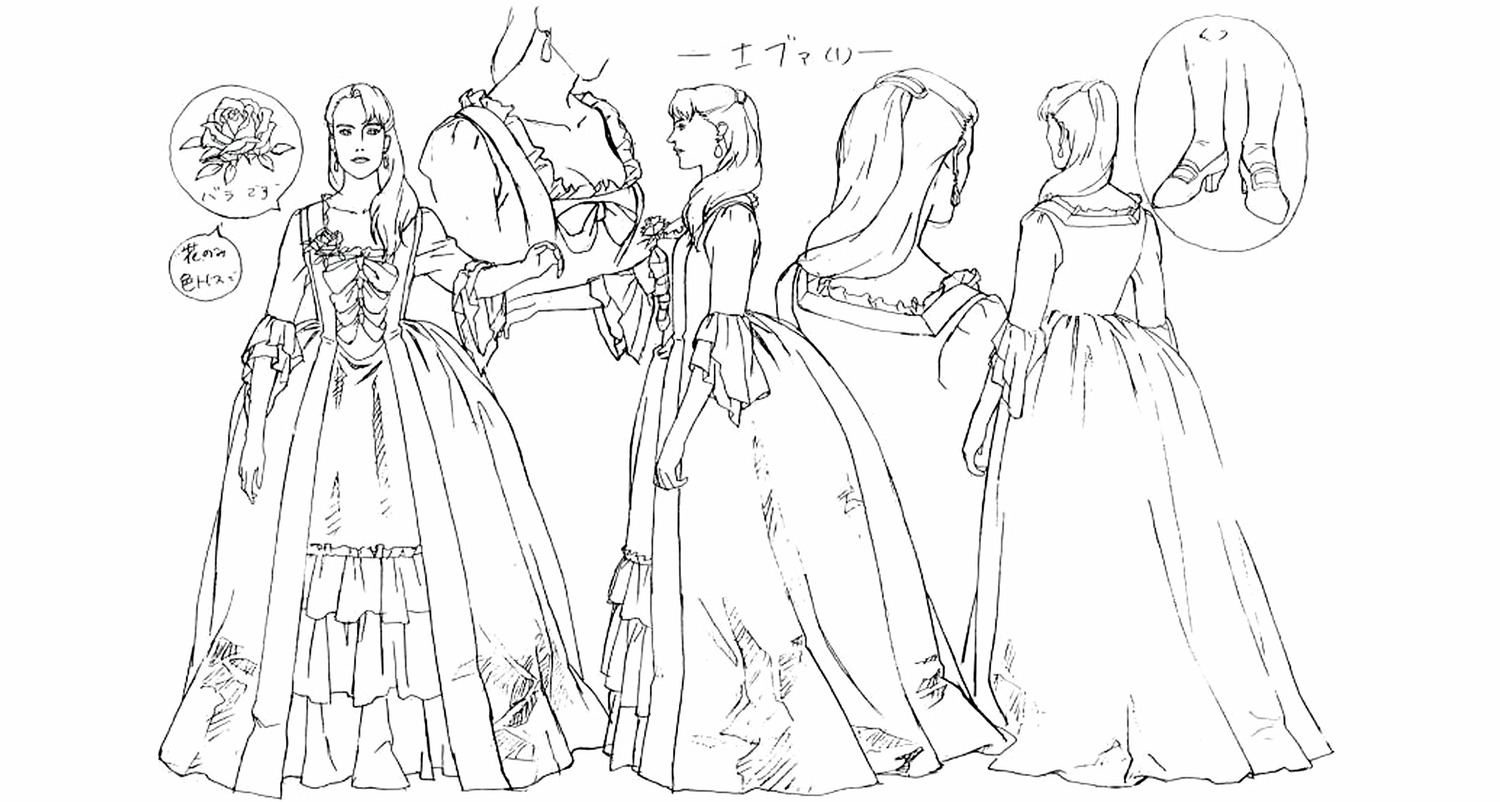
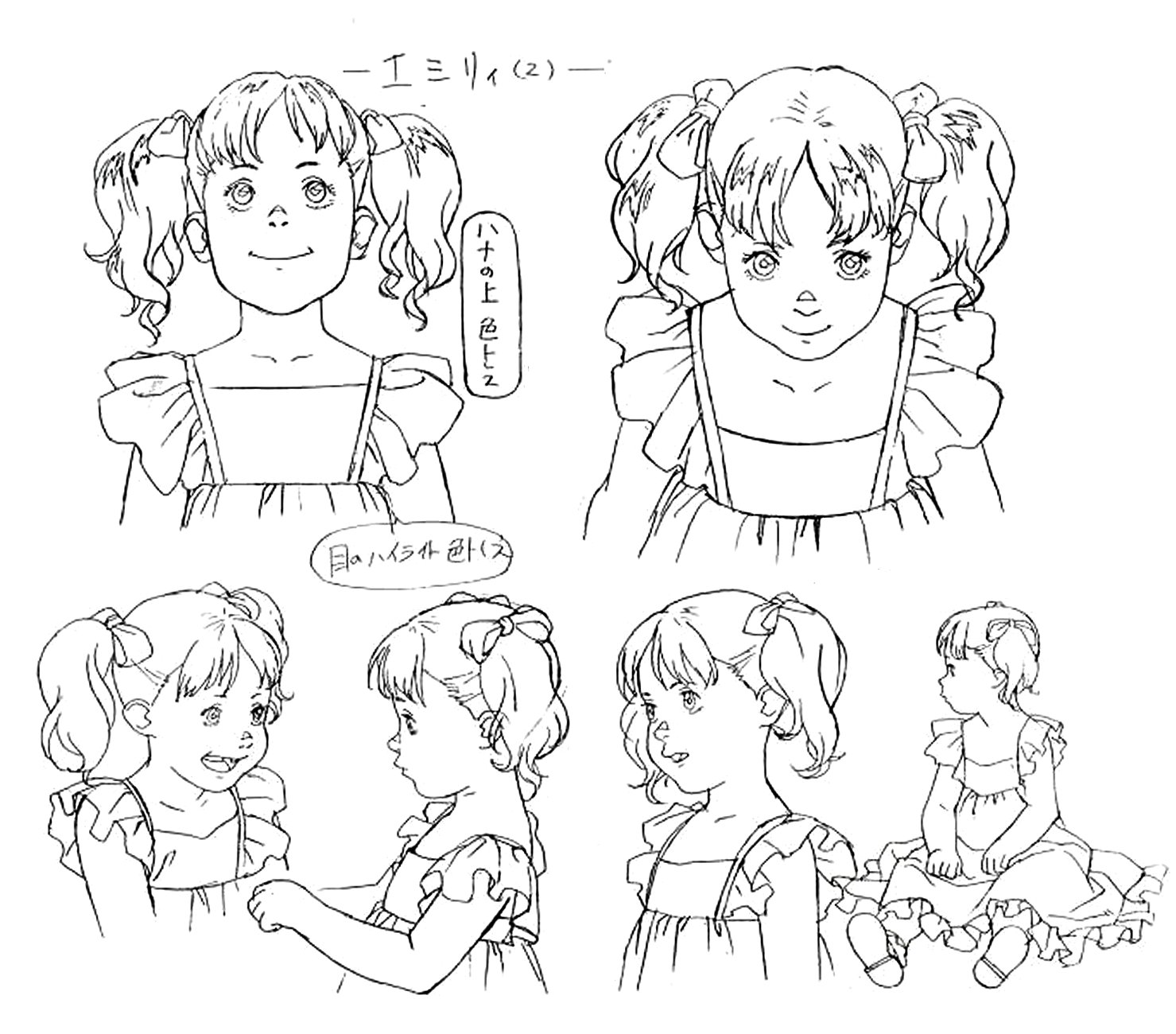
Inoue’s direction is able to match well with some of Morimoto’s decisions to implement cgi in some cases, and while not perfect gives the film a more futuristic look. Many MVP’s of the short, but the two standouts are Arai and Okiura. I covered Arai’s scene pretty in depth in his spotlight so there’s not a lot of reason to mention him, but Okiura’s scene is incredibly sweet and turns into tragedy.
Whole scene is Okiura
Okiura and Inoue are so close to each other in style around this time, that the distinction is nearly impossible. This is masterful animation through, and through.Inoue had nothing to do later on with Stink Bomb, but he did assist with one cut on the Otomo directed Cannon Fodder sakugabooru.com/post/show/66410
The next three years Inoue would work on a lot of OVAs and anime’s including Golden Boy, Ruroni Kenshin and a few more. One notable feature would be on the Ghost in the Shell PS1 opening in 1997.

Inoue 0:15-0:24
One of IG’s earliest ventures into digital inking, and painting it was an ambitious opening to say the least. This also marked Inoue’s first encounters alongside two prestigious brothers, Kou Yoshinari and Yoh Yoshinari, one of which Mitsuo Iso was familiar with.In 1999, Toshiyuki Inoue would return to animate more substantial projects. The first being Medabots, credited as a primary animator on the show’s opening

Inoue does the two opening shots, 0:28-0:48
He’d animate 4 episodes of the show’s runNear the very end of the year came a monumental film for Hiroyuki Okiura, Jin-Roh, written by Mamoru Oshii and Okiura’s directorial debut

This was a substantial showcase of animation on Production IGs part and with the dark and leery atmosphere was assisted by newcomers for Oshii’s crew. The first was Takeshi Honda, who of course made a great splash in the film, along with Masashi Ishihama and longtime recurring IG animator Yasunori Miyazawa (one of the oddest animators from the studio). This would also be Inoue’s first work under Tetsuya Nishio the youngest of the Three Wolves of IG. The look of the film plays into Okiura’s unbecoming obsession with accurate and realistic character animation. The characters are designed to look like Japanese people, and the animation has close to zero exaggerated or cartoonish movement, it’s a rarity in anime and difficult to pull off.Inoue was responsible for the opening scene of the film, along with several others

(extended cut of the scene) with molotov cocktail explosion
Inoue handles all of the mob protest shots in the opening by himself with Miyazawa assisting towards the end. Inoue is handling a pretty difficult layout by Okiura. For one the amount of crowd personnel he has to draw is cumbersome, but he easily makes it seem like reference footage, and no the scenes are not rotoscoped.

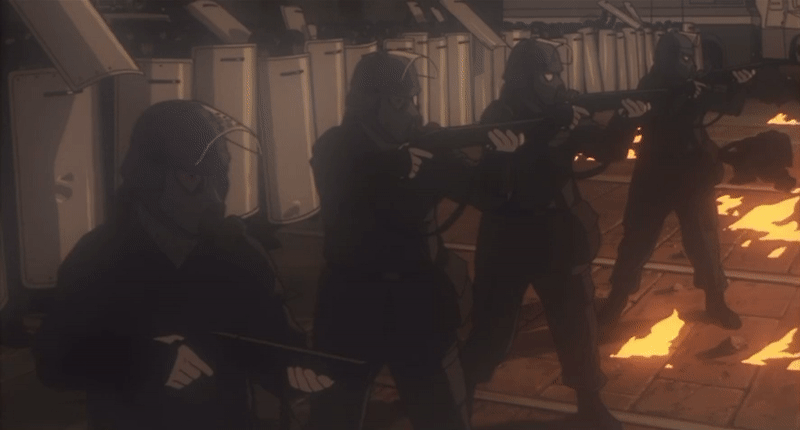
This is the high cost high demand of doing an Okiura film, quality animation with difficult layouts and precise realism.The next year Inoue provided animation to two projects, one being the final episode of Blue Submarine No. 6, an OVA made at Studio Gonzo and directed by Mahiro Maeda

The episode ADs was a joint effort between Inoue and Takeshi Honda. Honda had already proved himself to have cinema-tier animation direction on Evangelion and even that was 4:3 television show, the same applies here. This is best exemplified in the final confrontation with Varg following Koldyke’s death sakugabooru.com/post/show/190423, sakugabooru.com/post/show/190424\.There is a seriously strong amount of weight, and emotion in these cuts for its total of 5 minutes. Inoue is extremely hefty with the moment highlighting the brashness of the scene. sakugabooru.com/post/show/190426 the final bit of the cut reunited Inoue with Shinji Hashimoto and Shinya Ohira capping a glorious cut.
The same year Inoue contributed a few cuts on Blood: The Last Vampire, Production IG’s first original work

More of IG’s pursuit into digital animation, even receiving praise from James Cameron at the time for its revolution in anime. Inoue of course was joined by the usuals, Okiura and Iso both showing up. Shinji Otsuka who had been working freelance after leaving Ghibli did an great cut. This is one of the only films to feature both widely regarded action heroes of anime Norio Matsumoto and Yutaka Nakamura. Also an early KA days of Masahiro Sato. Inoue opens the film with the famous train sceneAfterwards he does a few cuts though nothing of extreme note.
2001, is incredibly important as it marks Inoue’s first work on a Satoshi Kon film, Millenium Actress

The movie is a sprawling epic of a women looking to give back a key to a man who may not even exist. Kon originally was going to give the character designs to Hideki Hamasu, but after suffering from severe tendon inflammation was replaced by Takeshi Honda. Honda effectively helped Kon rewrite the character look of his projects for the rest of his tenure until his death. Hamasu, Honda, Ghibli’s Kenichi Konishi and Shougo Furuya, and Inoue were all in charge of AD. This is effectively one of Kon’s most expansive looking films showing little to no limitations of the worlds on display.
Inoue’s two credited scenes is up there with one of his most inspirational scenes ever, showcasing the passionate run of Chiyoko sakugabooru.com/post/show/194994\. Easily the strongest scene in the movie, the run cycles are as close to perfection you can get, paired with gorgeous background animation and amazing boards by Kon. I can’t show any rough genga as 80% of the drawings for the film were not archived. Inoue shows up later sakugabooru.com/post/show/195049 and once again it’s near perfect, once again having mastery over horse animation (which btw is really difficult for many animators).Inoue did some quick video game work on Tales of Eternia along with Okiura and others

Inoue 1:43-1:47
In 2002, Kon worked on one film, a A Tree of Palme an unabashed Pinocchio adaptation written, directed and created by Takashi Nakamura. One of his last big works of which afterwards he’d effectively move away from big animation projects.


Created at the short lived Palm Studio, and Genco this was a big ask on Nakamura’s part to Inoue as he would do the character designs.
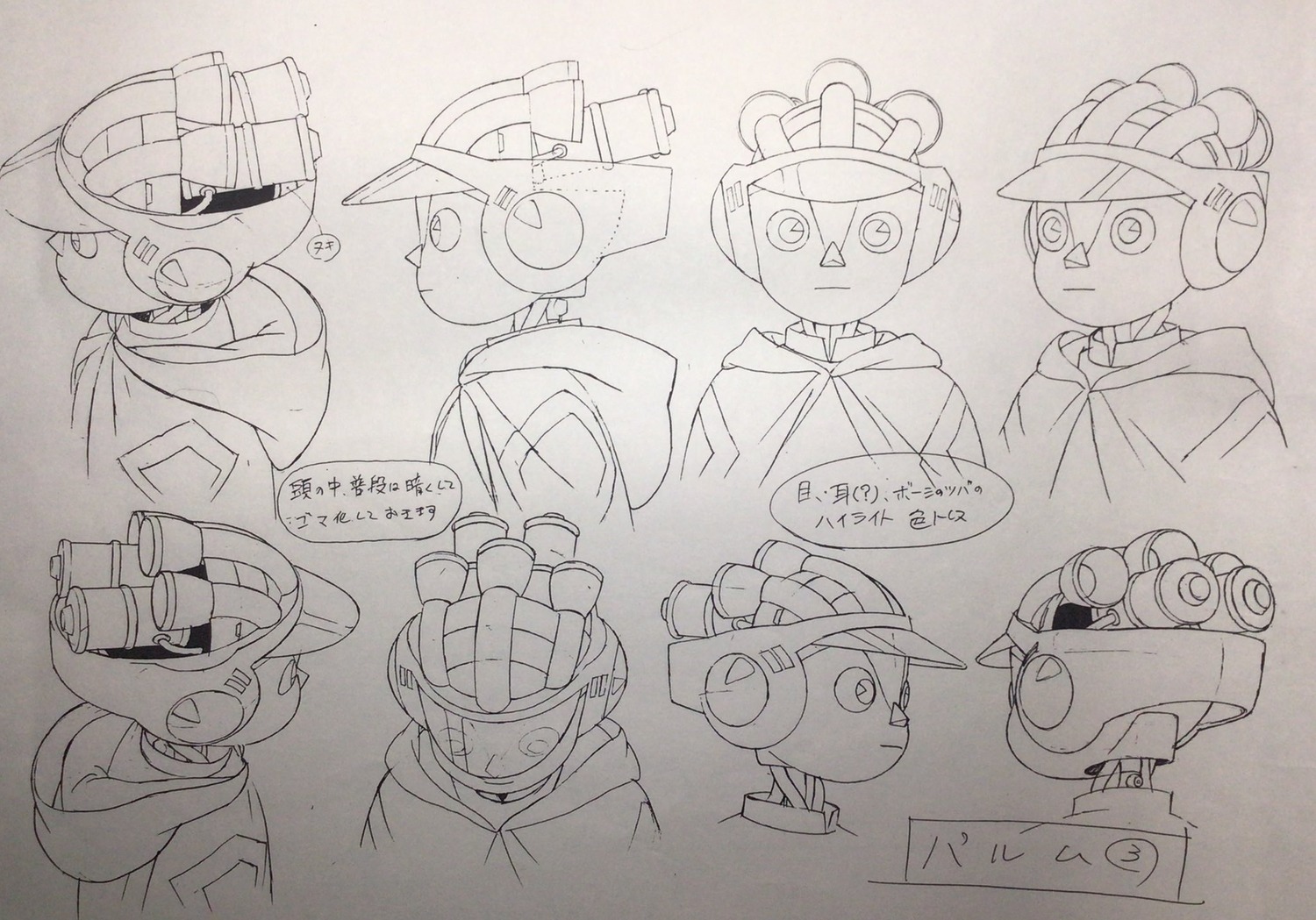
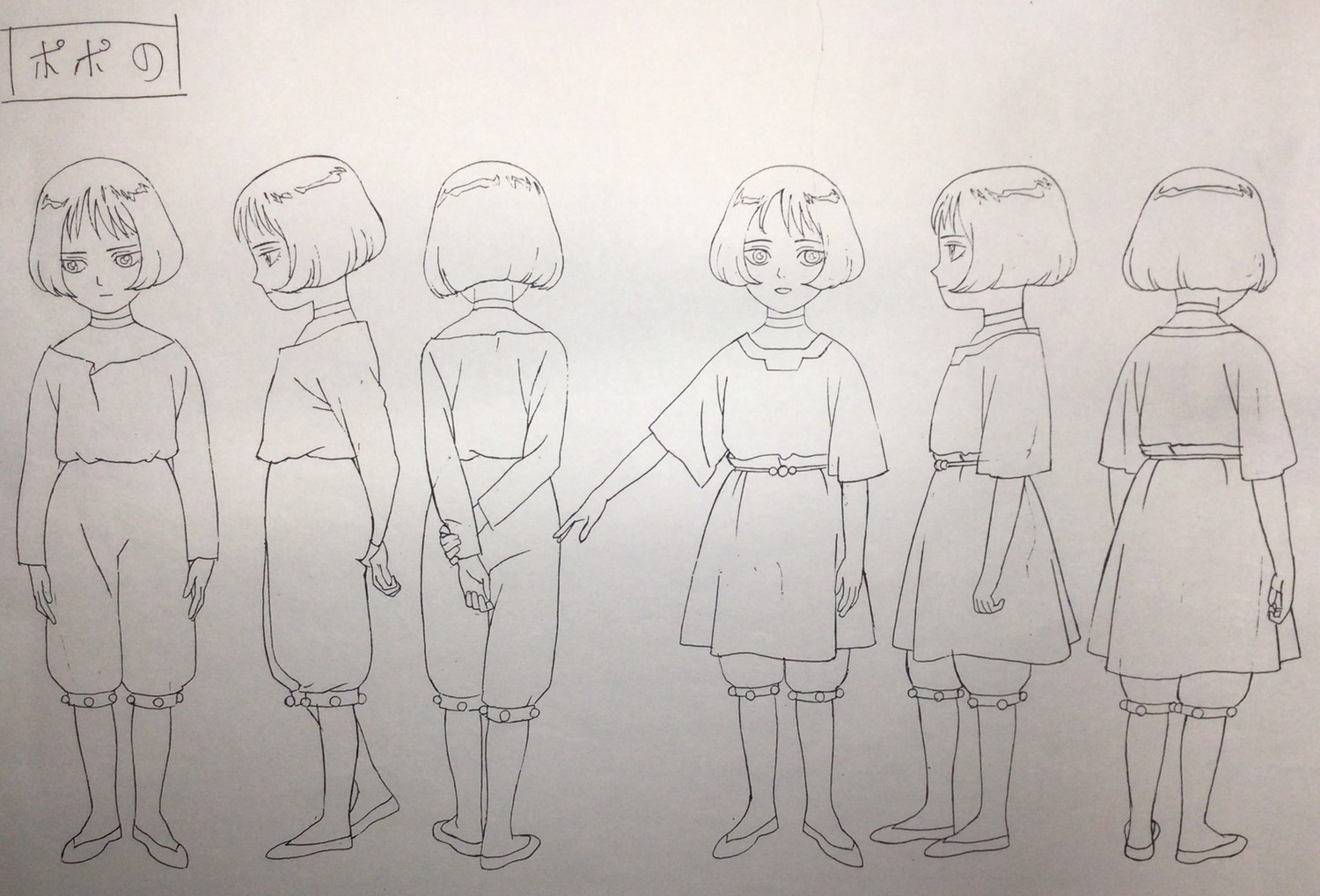
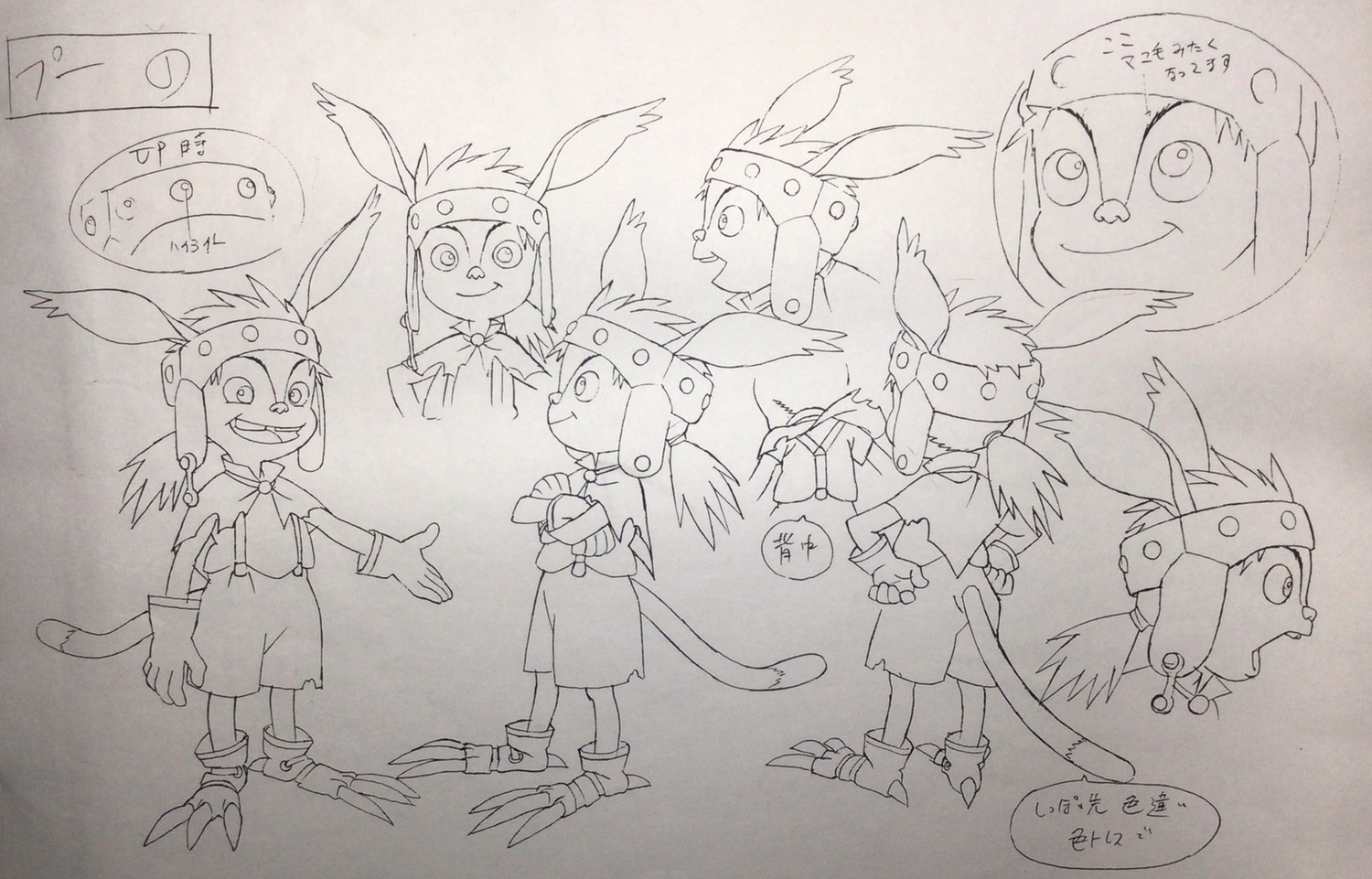
The Chief AD was the mysterious Mamoru Sasaki with five assistant ADs the two most notable being Hirofumi Masuda and Masaaki Endo. As for animation the film is gorgeous, although is unfortunately preserved in pretty bad quality due to Palm Studio no longer existing making the chance for an HD remaster impossible. Inoue’s scenes display what he’s been known for at this point. Weighty animation, and detailed character acting and body language. His opening fight scene is incredible, topped with a dash of heroic humanity in the cut, and assisted by great storyboards sakugabooru.com/post/show/11253\. His most impressive cut is Palme’s branch morphing scene, a terrible moment for the character captured well by the frantic panic of Popo sakugabooru.com/post/show/154899\. Inoue on his twitter shared the art setting designs by Nakamura(Inoue’s twitter has been an invaluable resource for this spotlight)
2003 after working on Mahoromatic, and Ghost in the Shell: Stand Alone Complex, he returned to Satoshi Kon on Tokyo Godfathers

One of the more comedic films in Kon’s filmography, the film is dominated by heavy dialogue and character acting with jittery comedic acting, thanks primarily in part to Shinji Otsuka who dominated a large part of the film solidifying its visual identity. Konishi, and Inoue were on AD work along with Masashi Ando. Other two animators who were super dominant were Michiyo Suzuki and Hamasu, and unlike Millenium Honda was able to contribute some animation and her scenes are great. Inoue was never going to outdo Otsuka’s Hana rant scene, but his work on the climax is fantastic as Kon left him in charge of the dramatic rooftop scene sakugabooru.com/post/show/163231\. I love this scene, and while its dramatic it doesn’t tone down the comedy as the facial expression captured in the scene work so incredibly well, and he even uses speed lines as Hana tries to hold on to the edge.Now 2004, is Inoue’s most preposterous year as he worked on 5 major projects. One of the most extreme feats for any animator ever, all of the overtime! His first work would be on Ghost in the Shell: Stand Alone Complex 2nd GIG doing some necessary sakuga to add more movement and life amidst the show’s slower pacing

Most notably on Episode 4 sakugabooru.com/post/show/119204, Episode 18 sakugabooru.com/post/show/119227, and of course Episode 21 where Inoue animates a great fight scene with Batou.
Inoue 0:26-1:08, Masashi Ando takes over a large portion after, and IG newcomer Ryotaro Makihara finishes up the final moments.
This scene may look a little stiff from the character Kuze, but in the show he could barely move with his body giving Batou the slight upper hand. Though he ultimately loses its still interesting to see the outcome nonetheless.The second of course would be on Mamoru Oshii’s bizarre Ghost in the Shell 2: Innocence

Being around the time of CGI boom of the 2000s, this film is filled to brim with digital integration, but it doesn’t distract from the amazing 2D work. For the first time the Three Wolves (Kise, Okiura, and Nishio) are on AD duty bringing on many of the best of the best. What was Inoue’s role? Inoue was known for doing the opening action cut of the original, with the rooftop jump, and an insane display of effects. In this movie he does neither of those and instead was assigned to handle really cute scenes of Batou’s dog Gabriel. sakugabooru.com/post/show/106480


This scene is executed so well. Inoue goes into painstaking detail of feeding a dog, and also the domestic bliss of hanging out with man’s best friendThe third effort came on Satoshi Kon’s Paranoia Agent

The series focuses on the stories of several people who feel “cornered” in life, being attacked by a boy in roller skates and a bat simply known as “Shonen Bat”. The threads of these characters are revealed, along with the mystery of Shonen Bat and why he’s attacking these people. Designs were handled by Masashi Ando, and the show had a rotating door of ADs highly trusted by Kon.Inoue wouldn’t be brought on in full swing until Episode 8, which was AD’d by Satoru Utsunomiya. A one off story featuring Utsunomiya’s designs, and one of the rare instances of tv anime where Okiura, Nishio, Honda, Matsumoto, Arai and Inoue are all on a single tv episode together. The episode also features a young Kenichi Kutsuna, the first webgen animator ever.
As for Inoue, he handles some cuts early in the episode then did layouts for the entire B section of the story, which he takes up about 3 minutes of total KA. The best part is the hanging scene sakugabooru.com/post/show/155710 over a minute of character acting. Despite Utsunomiya trying to persevere limited animation Inoue’s cut is very fluid, and stands in contrast with many of the other major animators on the episode, even Okiura surprisingly.After doing some unknown cuts on Episode 9, he’d be back for the series finale doing a majority of the effects heavy cuts of the black liquid




Though it’s said to be a liquid in the show, Inoue animates it with more of an intentionally gummy thickness. The dispersal of it is slower and less loose than his smoke, and blurs the line of what real life material it could actually be referenced from.The fourth project would be on Steamboy effectively Katsuhiro Otomo’s last film, taking about 10 years to produce.

After Otomo finishing up writing on Metropolis in 2001 the last hold out of 80s super talent with Rintaro on direction, Inoue missed out on that, but Okiura was involved. The coming film would be Otomo’s biggest project, one of the most expensive anime films at the time. Not only containing hand drawn animation, but CGI (which did not age that well). The film is filled to the brim with quality animation thanks to a stellar cast, although Inoue delivers the film’s best scene.
Inoue 0:29-End
This is the peak of Inoue effects. His study of Iso and subsequently Takashi Hashimoto who also participated on the movie, Inoue feels at the height of his powers and can do basically anything at this point. The shot of the two flying through the clouds is amazing, and keeping that constant movement in the background animation is eye-catching and sweet.The last project would be on Mahiro Maeda’s Count of Monte Cristo
Another Gonzo production, Inoue only appeared on a few episodes, Episode 2 being a serious standout. sakugabooru.com/post/show/126183 heavy usage of texture mapping.He also did a short for a Nike Lebron Ad that same year directed by Koji Morimoto, Tatsuyuki Tanaka, and Shinichiro Watanabe. catsuka.com/player/nike_chamber_of_fear Inoue does the part with the ghosts
In 2005, Inoue was recruited onto Paprika, Satoshi Kon’s last movie before his death in 2010, the film premiered September 2nd, 2006

Without a doubt Kon’s most popular, and often copied work adapted from Yasutaka Tsutsui’s 1993 novel. The film tells the amazing story of the manufacturers of a dream-device come to realize someone is interfering with the technology. Thanks to the help of a dream detective codenamed “Paprika” the cast venture to get to the bottom of the mystery, in a film that walks a tightrope between reality and imagination. Once again Masashi Ando is on AD and CD duties with Inoue and Ei Inoue (not related) on assistant AD. Ei Inoue is known for working on the top movies exclusively, and her KA presence isn’t that well known. Nearly every animator from Kon’s previous movies is here, Hamasu, Mihara, Konishi, Hashimoto, and Miyazawa. Hiroyuki Okiura makes his first appearance in a Kon film and its underrated
sakugabooru.com/post/show/119363 the way he’s able to make the evil chairman seem gigantic is insane. As for Inoue himself, he did about 6 minutes of animation with help from Ei Inoue, Ando, and Hamasu on a few cuts. Most notably the opening circus intro
Inoue 0:00-1:26 sakugabooru.com/post/show/119331 full scene
I love the briskness of every cuts, with Kon’s boards showing you the most vibrant experience. The cartoonish clown coming out of a toy car is great. The following cuts by Mihara exemplify the chaos of dream hopping. The second strongest by Inoue is the discovery of the Chairman being behind everything, sakugabooru.com/post/show/119349 this is one of the rare instances where an Itano Circus chasing the subject isn’t a missile, instead tree vines. The assault scene of Paprika sakugabooru.com/post/show/119378 is very horrifying, and Inoue’s final Kon scene ever is wonderful sakugabooru.com/post/show/119379.2007 was a big year for Inoue as he returned to tv anime as a Chief Animation Director on Mitsuo Iso’s directorial debut Dennou Coil produced at Madhouse


The entirety of Dennou Coil is Iso’s baby as he created, wrote, directed, and even was an animator. It plays into his aesthetics, being his love for technology and humanity being interlinked and condensing it down into a “neighborhood-roaming” story of adventure in a city where AR (augmented reality) emboldens the life of several kids trying to solve a mystery within their mostly superficial world. It seems surprisingly accurate too for the time, with the show being set in 2026, and commercial AR headsets are a commodity nowadays (in Coil its monetized). The proliferation of high-brow tech blurs the line between reality, and animation as Iso applies a ton of CGI effects and integrates them fittingly into the show. Takeshi Honda’s character designs are very animator friendly as there is limited shading very similar face shapes, and the kind of dull greyed out presentation of the show made it easy for the digital coloring department as it remained very consistent throughout.
In an interview with Fullfrontal Moe in 2022 Inoue described his role in the process“My credit on Dennou Coil was “chief animation director,” but it was slightly different from the usual work of a chief animation director.”
“The usual function of a general animation director is to correct all the layouts (i.e., the rough key animation) so that the characters remain consistent throughout. But I only did that for some episodes of Coil: instead, I acted as regular animation director on as many episodes as possible, and I also did key animation. I was also in charge of retakes on each episode under the director’s instructions.”
Inoue, Takeshi Honda, and Yoshimi Itazu were all credited as chief animation supervisors. Unfortunately Honda, and Iso did not get along well, and after Episode 11 Honda left, leaving Inoue and Itazu to fill the void in the second half of the show. The reason is kind of strange, though Inoue stated in the Moe interview that Honda said recently “I can talk to Iso normally these days”. It lowly boiled down to the two having disagreements in character approach as Honda went for a bishoujo approach like he does on Evangelion, though Iso reverted it down to something more manageable and friendly. The two have maintained a rivalry for a long time.
Since the show had a janky pace, Iso didn’t have a lot of time to work with the ADs and would focus primarily on voice recordings, storyboards, and editing, only giving verbal instructions to everyone. In that case the show was rife with guest ADs, including , Akira Honma Ei Inoue, Kouichi Arai, Nobutake Ito, Tadashi Hiramatsu, Takashi Mukouda, and Hiroyuki Aoyama. One significant animator to the show was Kiyotaka Oshiyama who along with Itazu would both go on to become successful Ghibli associated animators. Oshiyama’s AD work on several episodes was noticeably more bouncy with him applying avant-garde and stretchy character acting into a lot of scenes. As for guest animators there’s a lot, Masashi Ishihama, Kazuchika Kise, Masaaki Endo, Hisashi Eguchi, Kenichi Yoshida, Tatsuzou Nishita, Takaaki Yamashita, legendary Ghibli animator Katsuya Kondo, Shingo Abe, Gainax’s Akira Amemiya, Norio Matsumoto animated the end credits, webgenner Ryo-Timo, and Chikashi Kubota appear on Episode 25 doing an action sequence, Kumiko Kawana, and unknown cuts from Shuichi Kaneko, Ryotaro Makihara, Nobutoshi Ogura, and Yuki Hayashi.
Inoue himself was an AD on 6 episodes and animated on 13 doing some of his most modest work IMO. Inoue isn’t trying to be the fancy animator he is in movies, his animation is limited here to make up for the tv budget, and fits within the confines of Iso’s vision


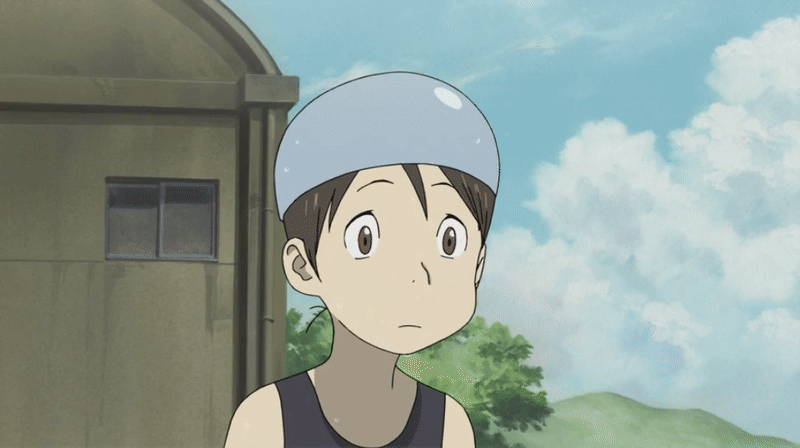

Inoue strongest animation is on Episode 18 sakugabooru.com/post/show/161792 where we get incredible character acting, its dramatic and well executed for tv anime. Inoue’s AD on the other hand is super expressive and helps excel otherwise mild conversation scenes instead using very expressive face drawings.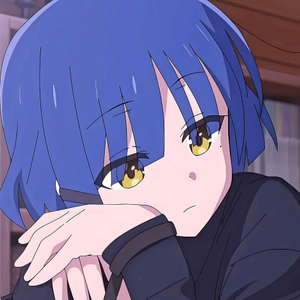 Carmen is Composed· edited
Carmen is Composed· edited2001, is incredibly important as it marks Inoue’s first work on a Satoshi Kon film, Millenium Actress

The movie is a sprawling epic of a women looking to give back a key to a man who may not even exist. Kon originally was going to give the character designs to Hideki Hamasu, but after suffering from severe tendon inflammation was replaced by Takeshi Honda. Honda effectively helped Kon rewrite the character look of his projects for the rest of his tenure until his death. Hamasu, Honda, Ghibli’s Kenichi Konishi and Shougo Furuya, and Inoue were all in charge of AD. This is effectively one of Kon’s most expansive looking films showing little to no limitations of the worlds on display.
Inoue’s two credited scenes is up there with one of his most inspirational scenes ever, showcasing the passionate run of Chiyoko https://www.sakugabooru.com/post/show/194994\. Easily the strongest scene in the movie, the run cycles are as close to perfection you can get, paired with gorgeous background animation and amazing boards by Kon. I can’t show any rough genga as 80% of the drawings for the film were not archived. Inoue shows up later https://www.sakugabooru.com/post/show/195049 and once again it’s near perfect, once again having mastery over horse animation (which btw is really difficult for many animators).This is one of my favorite scenes in Anime. What a GOAT
